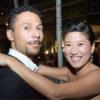-
Posts
5,199 -
Joined
-
Last visited
-
Days Won
140

Ray Singer replied to Prewar70's topic in General Nihonto Related Discussion

Ray Singer replied to karagoz's topic in Translation Assistance

